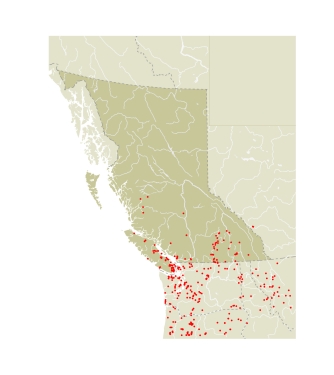Pine Whites are univoltine throughout their range. The adults are on the wing from late July at low elevations to late September at high elevations and on the west coast of Vancouver Island. The females spend most of their time resting in the upper branches of conifers, making short flights for oviposition or to forage for nectar. Males spend most of their time patrolling the surface of the conifers (where females rest), but spend considerable time nectaring at flowers, especially in the morning and evening. Their flight is very slow and weak, making it possible to capture them in midair with bare hands.
Pine Whites undergo occasional population outbreaks that result in severe defoliation of conifers, which is sometimes controlled by aerial spraying. Fletcher (1902) noted that "towards the end of the season, in August, the dead butterflies may be seen in vast numbers floating on the sea around Vancouver Island, or thrown up along the beach in windrows sometimes an inch or two in depth." The most recent population outbreak in BC was in 1961 on Vancouver Island, when there were "snowdrifts" of Pine Whites along the highway through Cathedral Grove (CSG). Population outbreaks are rare now, possibly because most of the old forests of southeastern Vancouver Island have been eliminated. High population densities in Yakima County, WA, have damaged ponderosa pines (Newcomer 1964a), but very large numbers of adults in flight do not necessarily result in noticeable defoliation (Young 1987).
Eggs are laid in groups at the base of conifer needles, where they overwinter. The eggs hatch in the spring, and the larvae feed on the new needles. Pupation may occur on the tree branches, or the larvae may drop to the ground on silk threads to pupate on tree bases or shrubs (Edwards 1887-97).
In BC Pine Whites use a wide range of conifers in the family Pinaceae as foodplants, including amabilis fir, Douglas-fir, lodgepole pine, ponderosa pine, western hemlock, western white pine, and the introduced Scotch pine (Harvey 1908; CSG; FIS). Within a given area, one coniferous species is generally preferred over the others that are present. Outside BC additional larval foodplants include Jeffrey pine, pinyon pine, and subalpine fir (Howe 1975; Scott 1992).
|
